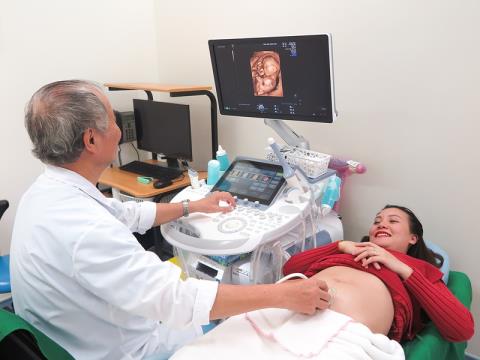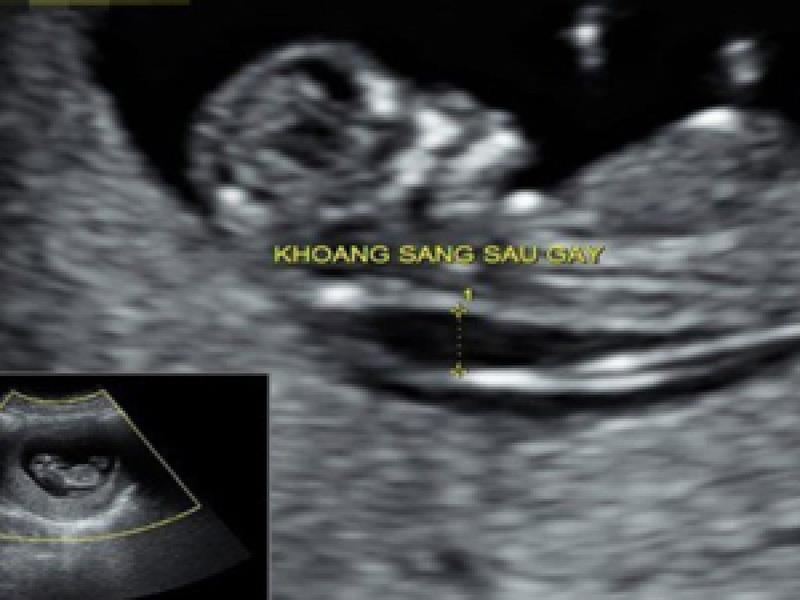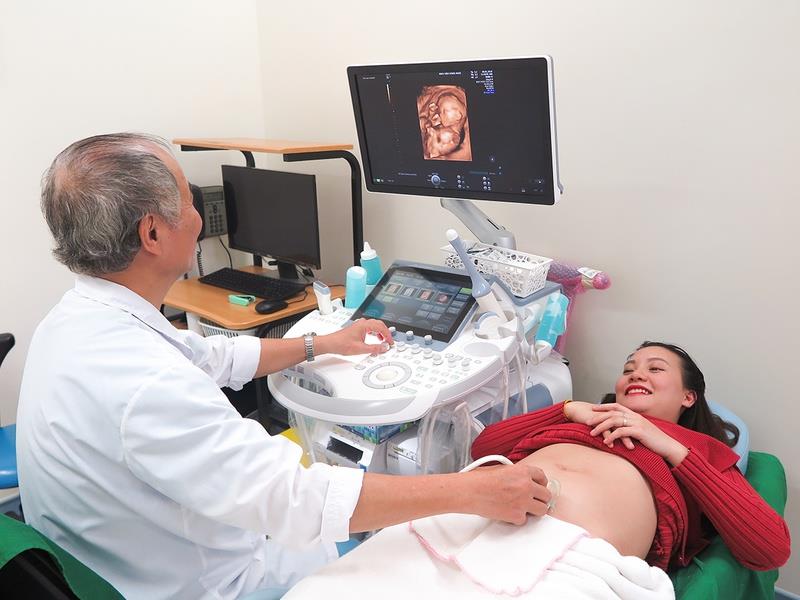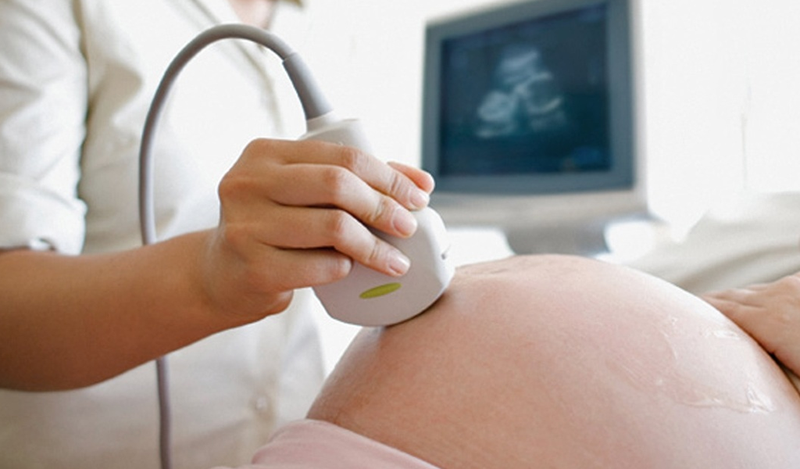How to perform nuchal translucency measurement and what you need to know

Pregnant mothers are often advised that nuchal translucency ultrasound is very necessary and should be done to limit the risk of birth defects for the baby right at the beginning of pregnancy. So what is nuchal translucency and what should moms pay attention to?
Nuchal translucency measurement is an extremely important test, helping doctors diagnose the risk of fetal Down syndrome from the early stages of pregnancy. Measuring nuchal translucency helps pregnant mothers feel more secure about the health of the fetus. Let's find out what nuchal translucency is and how much is normal in the fetus?
What is nuchal translucency?
Nuchal translucency (or nape of the neck) is the accumulation of fluid under the skin in the nape of the fetus. All babies between 11 weeks and 14 weeks of gestation have this fluid accumulation in the nape of the neck. Performing nuchal translucency measurement to check the nape of the baby's nape by fetal ultrasound helps the doctor to diagnose the risk of Down syndrome at the earliest, thereby advising whether the mother needs to do more screening tests . prenatal NIPT or some other necessary test or not.
 Nuchal translucency is the accumulation of fluid under the skin in the nape of the fetus
Nuchal translucency is the accumulation of fluid under the skin in the nape of the fetus
How to perform nuchal translucency measurement?
After understanding what nuchal translucency is, we'll learn how to measure nuchal translucency. Nuchal translucency measurement is the earliest test used to diagnose Down syndrome during pregnancy . Fetal ultrasound at the right time is the way to check the nape of your baby. This not only helps the doctor to diagnose the risk of having a baby with Down syndrome, but also helps to detect whether the baby has a chromosomal abnormality or not.
All healthy babies have fluid at the back of their necks, but normal babies will have less fluid under the skin at the back of their necks than babies at risk for Down syndrome. When determining that the fetus is at risk, the doctor will conduct follow-up tests such as chorionic villus sampling, amniocentesis....to be able to accurately determine whether the child has Down syndrome or not. Are not.
 Fetal ultrasound to check the baby's nape
Fetal ultrasound to check the baby's nape
To get the most accurate nuchal translucency measurement, it is necessary to take the measurement from 11 to 14 weeks of pregnancy. This is a very important time, pregnant mothers must absolutely pay attention because done too early before 11 weeks, the nape of the neck will be very blurry, and if the nuchal translucency measurement is done when the fetus is more than 14 weeks, the results will be very dark. The nuchal translucency returns to normal, but this does not mean the fetus is normal.
What is the normal fetal nuchal translucency?
After the ultrasound has been performed, the doctor will tell the pregnant mother the results of the nuchal translucency. For fetuses measuring 45 - 84mm, the nuchal translucency is usually less than 3.5mm. Usually, the results of the nuchal translucency test will help the doctor diagnose a 75% chance of having a baby with Down syndrome.
- If the fetus is 11 weeks old, the standard nuchal translucency is 2mm.
- If the fetus is 12 weeks old, usually the standard nuchal translucency is less than 2.5mm.
- If the fetus is 13 weeks old, the standard nuchal translucency is 2.8mm.
Risk of Down syndrome:
- The risk of Down syndrome is low for fetuses with nuchal translucency less than 1.3mm.
- If the nuchal translucency is > 3mm, the risk of that fetus having Down is quite high.
- If the nuchal translucency is 6mm, the fetus is at high risk for Down syndrome and other birth defects .
- The nuchal translucency of the fetus from 3.2 to 3.5mm is called thickening and increases the risk of chromosomal mutations.
- If the nuchal translucency is 2.9mm, it is not a high level but can affect the value of screening tests in the first 3 months of pregnancy. Therefore, to be more certain, pregnant women should perform other in-depth tests.
Things need to notice
The results of measuring nuchal translucency by ultrasound can diagnose almost 75% of the risk of babies with Down syndrome. Of course, there are still some cases when the nuchal translucency measurement is abnormal but the fetus is normal. This means that even though the outcome is "high-risk," you can still have a healthy, normal baby. However, not because of this, subjective mothers do not need to do other tests to screen and diagnose more accurately.
To diagnose a relatively accurate fetus with Down syndrome, mothers can perform additional non-invasive prenatal screening tests NIPT, for mothers from the 10th week of pregnancy. NIPT is a non-invasive test. giving accurate results > 99.9%, absolutely safe, easy to do, only need 10ml of mother's blood. Compared with amniocentesis and chorionic villus sampling, NIPT reduces the risks both mother and baby face when performing other invasive tests.
 Nuchal translucency ultrasound
Nuchal translucency ultrasound
The worst case scenario is that after the above tests, the baby still has Down results, so you need to listen to all the analysis and advice from the doctor to fully measure the situation and make a final decision.
Hopefully, through this article, mothers have had more information about what nuchal translucency is as well as how much nuchal translucency in the fetus is normal. The nuchal translucency test is very important, so mothers should pay attention to do it exactly as the recommended time to get the most accurate results.